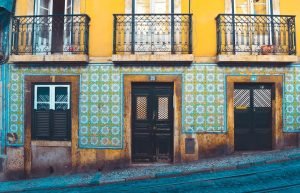
Das F1-Erbe von Portimao
Portimao, eine Küstenstadt in der portugiesischen Algarve-Region, hat sich in den letzten Jahren zu einem wichtigen Ziel für Formel-1-Rennen entwickelt. Diese Entwicklung ist auf mehrere Faktoren zurückzuführen
On November 1, 1755, one of the deadliest earthquakes in history struck Lisbon, Portugal. The earthquake, estimated to have a magnitude of 8.5 to 9.0, caused widespread destruction and loss of life not only in Lisbon but also in other parts of Portugal and neighboring countries. The earthquake was followed by a tsunami that further exacerbated the devastation. The combined effects of the earthquake and tsunami resulted in the deaths of an estimated 60,000 to 100,000 people.
Portimão, located in the Algarve region of Portugal, is a port city with a rich history and cultural heritage. Despite being over 100 miles away from the epicenter of the earthquake, Portimão was not spared from its effects. The earthquake caused significant damage to the city’s buildings and infrastructure, leaving a lasting impact on the local population and economy.
Portimão’s location as a port city made it vulnerable to the destructive forces unleashed by the earthquake and subsequent tsunami. The city’s proximity to the coast meant that it was directly exposed to the powerful waves generated by the earthquake. As a result, many buildings along the waterfront were completely destroyed or severely damaged.
The destruction caused by the earthquake and tsunami in Portimão was extensive. Many of the city’s buildings, including churches, houses, and public buildings, were reduced to rubble. The infrastructure, such as roads and bridges, was also heavily damaged or destroyed.
The types of buildings that were most affected by the earthquake were those made of traditional construction materials such as stone and adobe. These buildings were not designed to withstand such a powerful earthquake and were therefore more susceptible to collapse.
The impact on the local population was devastating. Many people lost their homes and livelihoods, and the city’s economy suffered a severe blow. The fishing industry, which was a major source of income for the residents of Portimão, was particularly hard hit, as many boats and fishing equipment were destroyed by the tsunami.
In the immediate aftermath of the earthquake, the priority in Portimão was to provide emergency relief to the affected population. Rescue efforts were launched to search for survivors and provide medical assistance to the injured. Temporary shelters were set up to accommodate those who had lost their homes.
In the years following the earthquake, extensive rebuilding efforts took place in Portimão. The city was reconstructed using more earthquake-resistant building techniques and materials. The rebuilding process was not without its challenges, as resources were scarce and many skilled workers had perished in the earthquake.
Architecture played a crucial role in the reconstruction of Portimão. The earthquake had exposed the vulnerabilities of traditional building methods, prompting architects and builders to adopt new techniques that would make buildings more resistant to earthquakes.
The architectural styles used in the rebuilding of Portimão were influenced by both local traditions and contemporary trends. The use of reinforced concrete became more prevalent, as it offered greater strength and durability compared to traditional materials. Architects also incorporated elements of neoclassical and baroque styles into their designs, reflecting the city’s rich cultural heritage.
Prominent architects and builders were involved in the reconstruction process, including João de Sousa Araújo, who designed several important buildings in Portimão, such as the Church of Our Lady of Conception.

The earthquake had far-reaching economic and social consequences for Portimão. The destruction of buildings and infrastructure meant that many people lost their homes and livelihoods. The fishing industry, which was the backbone of the local economy, was severely impacted, leading to widespread unemployment and poverty.
The earthquake also had a profound effect on the social fabric of Portimão. Many families were torn apart as loved ones perished in the disaster. The trauma and loss experienced by the survivors left a lasting impact on their mental and emotional well-being.
In the aftermath of the earthquake, religion and spirituality played a significant role in providing comfort and support to the people of Portimão. Churches and other religious sites were not spared from the destruction caused by the earthquake, but they were subsequently rebuilt as a symbol of hope and resilience.
The local population turned to religion as a source of solace and guidance during this difficult time. Religious ceremonies and rituals were held to mourn the dead and pray for the recovery of the city. The rebuilt churches became important gathering places for the community, serving as a reminder of their shared faith and resilience.
The earthquake had a profound impact on the urban planning and design of Portimão. The destruction caused by the earthquake highlighted the need for better planning and design practices that would make the city more resilient to future earthquakes.
As part of the rebuilding efforts, urban planners implemented new zoning regulations and building codes that required structures to be built to withstand seismic activity. The city’s layout was also redesigned to improve accessibility and promote sustainable development.
Prominent architects and urban planners, such as Raul Lino and Francisco Keil do Amaral, were involved in shaping Portimão’s post-earthquake urban landscape.
The rebuilt heritage sites in Portimão hold great significance for the city’s history and cultural identity. These sites serve as a reminder of the devastating impact of the earthquake and the resilience of the local population in rebuilding their city.
The Church of Our Lady of Conception, for example, is not only an architectural masterpiece but also a symbol of the city’s religious heritage. The Portimão Museum, housed in a former fish canning factory, showcases the city’s maritime history and its journey of recovery from the earthquake.
Preserving these rebuilt heritage sites is of utmost importance to ensure that future generations can learn from the past and appreciate the resilience and determination of the people of Portimão.
Today, Portimão is a vibrant city that attracts visitors from around the world. The city offers a range of attractions and activities that allow visitors to explore its history and culture.
Visitors can explore the rebuilt heritage sites, such as the Church of Our Lady of Conception and the Portimão Museum, to learn about the city’s journey of recovery from the earthquake. The city’s historic center, with its narrow streets and traditional architecture, provides a glimpse into Portimão’s past.
In addition to its historical attractions, Portimão also offers beautiful beaches, lively markets, and a thriving culinary scene. Tourism plays a crucial role in the city’s economy, and visitors have an important role to play in preserving Portimão’s heritage for future generations.
If you’re interested in learning more about the history and impact of natural disasters in Portugal, you might also enjoy reading the article “The 1755 Lisbon Earthquake: Its Impact and Rebuilding in Portimão” on CoCreate’s blog. This article delves into the devastating earthquake that struck Lisbon in 1755 and explores how it affected the nearby city of Portimão. It provides a fascinating insight into the resilience and rebuilding efforts of the people in the aftermath of such a catastrophic event. Check it out here!

Portimao, eine Küstenstadt in der portugiesischen Algarve-Region, hat sich in den letzten Jahren zu einem wichtigen Ziel für Formel-1-Rennen entwickelt. Diese Entwicklung ist auf mehrere Faktoren zurückzuführen

Die Algarve-Region in Portugal ist für ihre vielfältigen Attraktionen bekannt, zu denen neben den berühmten Stränden und malerischen Landschaften auch eine florierende Weinindustrie gehört. Die Region ist

Das öffentliche Verkehrssystem Portugals ist eine effiziente und bequeme Art, das Land zu erkunden. Es gibt eine Vielzahl von Verkehrsmitteln, darunter Metro, Straßenbahn,